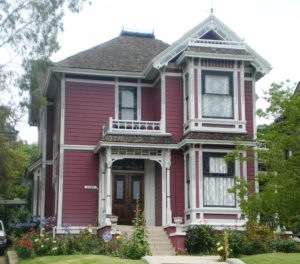7.2: Introduction to En la casa
- Page ID
- 113985

In this section you will learn about the household using the verb estar with prepositions of place.
Prepositions are relation words; they can indicate location, time, or other more abstract relationships. “Under,” “over,” “in,” “on,” and “behind” are all prepositions of place. Follow this link to learn more about prepositions (in English).
In Unidad 1 you briefly learned the verb estar in questions like “¿Cómo estás?” to ask “How are you?”. In this unit we will use the verb to describe the location of things in a household and further conjugate the verb. Something very important that seems to always get left out are the “tildes” or diacritical marks in Spanish. You may have noticed that unlike English, Spanish may use a variety of diacritical marks on the vowels (á, é, í, ó, ú, ü) and on the ñ. Accent marks are important for pronunciation as well as distinguishing the meaning of one word from another. You will notice when we conjugate estar there is always an accent mark on the “a” except for the nosotros form, and this reflects the different pronunciation of the conjugated verb, as opposed to the word “this.” For example: Marta está aquí. (Marta is here.) Esta es Marta. (This is Marta). As you can see these words look almost the same but a single “tilde” changes the entire meaning from the verb “is” to “this.” Here are some other words that change meaning when they have or don’t have an accent mark:
- aun = even / aún = yet
- el = the / él = he
- mas = but / más = more
- mi = my / mí = me
- si = if / sí = yes
- tu = your / tú = you
Objetivos
By the end of this section you will be able to:
- Use the verb estar and the vocabulary of rooms and furniture to discuss where people and things are located
Contributors and Attributions
- House at 1329 Carroll Ave., Los Angeles (Charmed House). Authored by: Los Angeles. Provided by: Wikimedia Commons. Located at: https://commons.wikimedia.org/wiki/File:House_at_1329_Carroll_Ave.,_Los_Angeles_(Charmed_House).JPG. License: CC BY-SA: Attribution-ShareAlike
- Introduction to En la casa. Authored by: Lumen Learning. License: CC BY: Attribution


